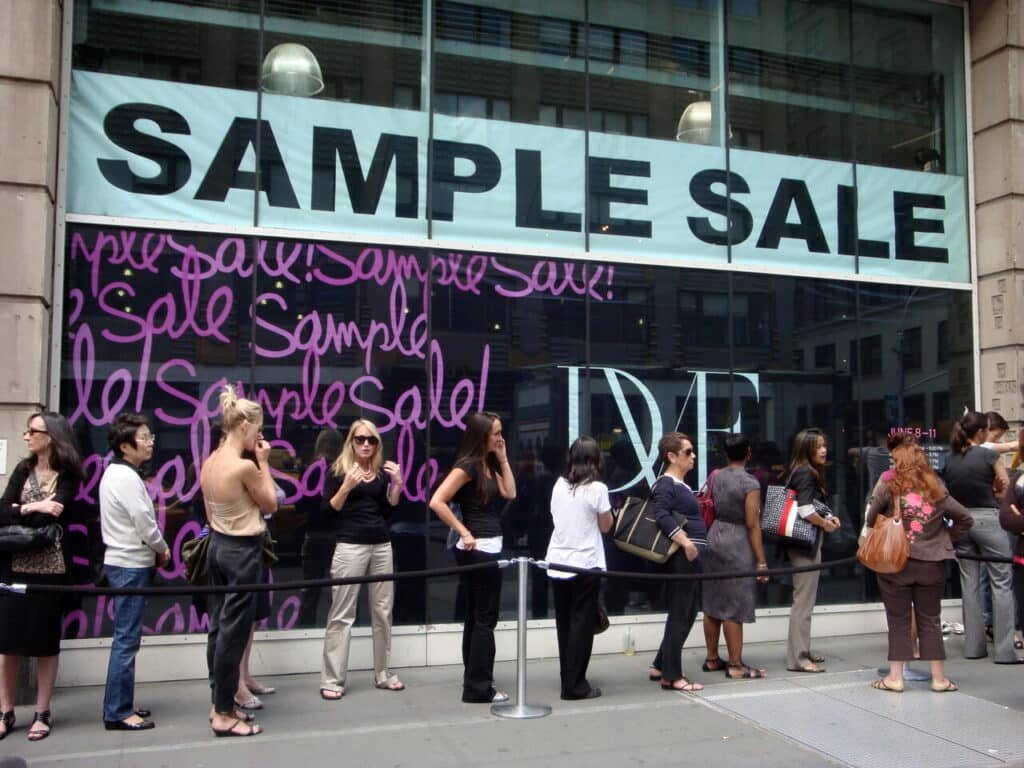How to Find Sample Sales Online from Clothing Manufacturers in 2024
Finding sample sales online from clothing manufacturers can be an exciting and cost-effective way to upgrade your inventory with high-quality pieces at a fraction of their regular prices. Sample sales are typically organized by clothing manufacturers to showcase their products and sell off excess inventory, prototypes, or discontinued items. In this article, we will guide you through the process of finding sample sales online and making the most of these opportunities to score incredible deals on stylish clothing. Understand What Sample Sales Are Before delving into how to find sample sales online, it’s important to understand what sample sales are and what you can expect. Sample sales are events where clothing manufacturers and designers sell their samples, excess inventory, or imperfect items directly to the public. These sales are often held to clear out older stock, generate buzz for new collections, or test market interest in new designs. The items sold at sample sales can vary widely. You may find brand-new pieces that are slightly flawed, one-of-a-kind prototypes, or surplus inventory from past seasons. Since these sales offer items at significant discounts, they’re a popular way for savvy shoppers to acquire high-quality garments without breaking the bank. Look for Sample Sales on Manufacturer Websites One of the first places to search for sample sales is on the websites of clothing manufacturers themselves. Many brands host their own sample sales directly on their websites. Here’s how you can start your search: a. Subscribe to Newsletters: Subscribe to the newsletters of your favorite clothing manufacturers. Many brands will announce upcoming sample sales, discount events, or exclusive promotions through their mailing lists. This way, you can stay informed about upcoming opportunities. b. Check the “Sale” or “Outlet” Section: Visit the manufacturer’s website and navigate to the “Sale” or “Outlet” section, which often features discounted items. Keep an eye out for sample sales or clearance events within these sections. c. Follow on Social Media: Manufacturers often use their social media accounts to announce sample sales and special promotions. Be sure to follow them on platforms like Instagram, Facebook, and Twitter to receive real-time updates. Utilize Sample Sale Websites and Apps In addition to checking manufacturer websites, there are specific websites and apps dedicated to listing sample sales across various brands and designers. These platforms make it easy for you to discover sample sales in your area or online. Some popular options include: a. Sample Sale Sites: Websites like Beautiful Connection Group, which is a clothing manufacturers’ marketplace. Here you’ll get the sample sales items from the most popular clothing manufacturers from the USA or outside the USA. Sample sale register: https://marketplace.beautifulcng.com/sample-sale/login b. Fashion Apps: Download fashion-focused apps like Shop It To Me, which alert you about sample sales and discounts on clothing from your favorite brands. c. Outlet and Flash Sale Websites: Websites like Gilt, Zulily, and Hautelook host limited-time sales events that include clothing from a variety of brands, often at discounted prices. Join Online Shopping Communities Online shopping communities and forums can be excellent resources for finding out about sample sales. These communities are made up of fashion enthusiasts who share information about upcoming sales, coupon codes, and deals. Websites like Reddit and PurseForum have dedicated threads where members discuss sample sales and share their finds. Additionally, platforms like Facebook and Instagram have groups and accounts specifically dedicated to alerting users about sample sales, clearance events, and discounts. Joining these groups or following these accounts can help you stay up-to-date with the latest deals. Explore Local Sample Sales If you prefer to shop in person and have a local clothing manufacturer nearby, consider attending their physical sample sales. Many manufacturers open their doors to the public during these events, allowing you to browse their collections in person and try on items before purchasing. To find local sample sales: a. Search for Local Designers and Brands: Research clothing manufacturers and designers in your area. Check their websites or contact them directly to inquire about upcoming sample sales or in-person events. b. Visit Designer Showrooms: Some manufacturers have showrooms where they display their collections. These showrooms may occasionally host sample sales, so check their websites or contact them for information. Set a Budget and Be Prepared Before you start shopping at sample sales, it’s essential to set a budget for yourself. Sample sales can be exciting, and it’s easy to get carried away, so having a spending limit in mind will help you stay in control of your purchases. Additionally, be prepared by: a. Arriving Early: Many sample sales are first-come, first-served, so getting there early can help you secure the best deals. b. Knowing Your Sizes: Know your clothing sizes, as you might not have the option to try on items at some sample sales. This will help you make accurate selections. c. Examining Items Carefully: Since sample sales may feature items with slight flaws or irregularities, carefully inspect each piece before purchasing. Ensure you’re comfortable with any imperfections. Check Return Policies Before making a purchase at a sample sale, be aware of the return policy. Often, items bought at sample sales are final sale, meaning you won’t be able to return or exchange them. Make sure you’re completely satisfied with your selections, as there may be no recourse if you change your mind later. Be Mindful of Counterfeit Items Unfortunately, sample sales can sometimes attract sellers who attempt to pass off counterfeit items as authentic. To avoid purchasing fake products, be cautious of deals that seem too good to be true and do your research on the brand or designer you’re interested in. Sample sales from clothing manufacturers offer an excellent opportunity to score high-quality, stylish clothing at discounted prices. Whether you’re looking to update your wardrobe or find unique pieces, following the steps mentioned in this guide will help you find sample sales online and in your local area. Remember to stay informed about upcoming sales, set a budget, and be prepared to make the most of these exciting shopping
How to Find Sample Sales Online from Clothing Manufacturers in 2024 Read More »



